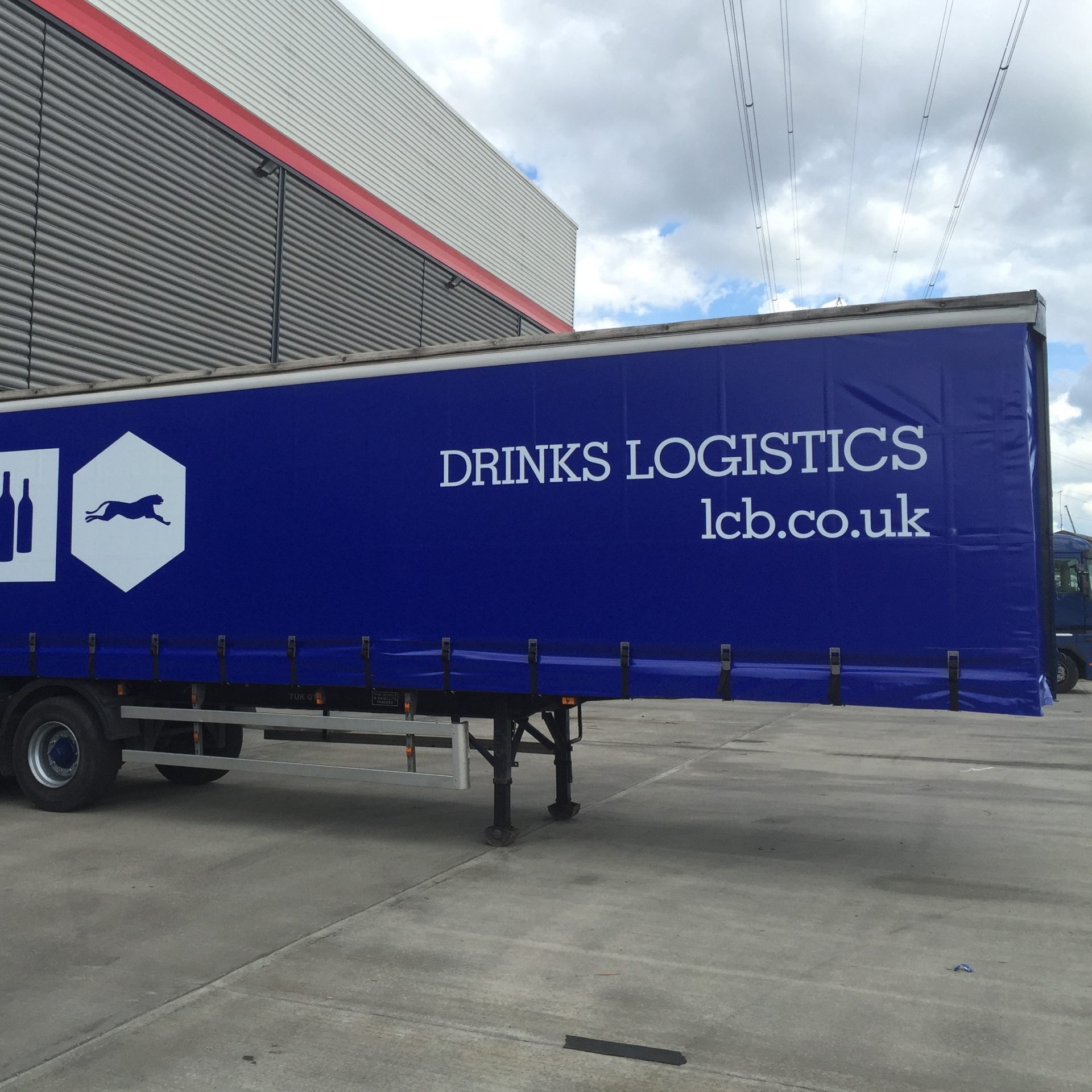Gin: Too big to fail?
By Phoebe FrenchThe gin category has enjoyed explosive growth in recent years, with hundreds of new brands being founded. Phoebe French examines the popularity of the sector, but asks whether this amazing growth is sustainable in the long run.
THE RAPID rise of any drinks category inevitably begs the question: when will it fall? Many have predicted gin’s demise, but as yet have not dampened its spirit. Last year, gin sales in the UK’s on- and off-trade surpassed £1 billion for the first time, with the latest figures from the Wine and Spirit Trade Association (WSTA) showing UK gin exports to stand at around £500 million, an increase of 32% in the past five years.
The UK produces more than 500 gins, with around 6,000 worldwide. HMRC says the number of distilleries in the UK has risen from 128 in 2012 to 273 today, an upturn that gin has undeniably affected.
But is predicting the end the best way to forecast the future? As Fairfax Hall, co-founder of Sipsmith, tells the drinks business, the perception of the gin market has altered during the modern gin renaissance, so it now “has more in common with the stratification of the whisky category than other white spirits”.
Gin has carved itself a niche in the British, if not global psyche. Its versatility is its main strength. While the current growth rate will undoubtedly tail off, will the gin bubble ever truly burst? Perhaps we should be asking what does it take to survive in an increasingly competitive market, and what is next for the category?
Everyone loves a good story about a gin, whether its made from scratch using rejected, wonky potatoes or created in a copper still, crammed into a residential garage in west London with a hand-written alcohol licence. These stories, however, are more than just amusing anecdotes. While price, bottle design and branding are all essential ingredients, it is the sense of place and provenance that are helping modern gin brands to prosper.
Wild surroundings: Hepple Gin.
Bombay Sapphire was the first to capitalise on the thirst for authenticity. Bursting onto the scene in 1988 in a beguiling blue bottle, it proudly promoted the botanicals contained within: ‘juniper berries from Italy’, ‘lemon peel from Spain’, ‘coriander seeds from Morocco’, and so the list continues.
The upsurge of craft distilling in the 2000s has given rise to a focus on ‘location’ as well as ingredients. James Chase, head ambassador of Chase Distillery, founded in 2008 and the first in the UK to truly champion the field-to-bottle approach, makes the point: “You would never dream of buying a bottle of wine over £30 without knowing the vineyard, winemaker or terroir – why then, should it be any different for gin?”
Local identity has become synonymous with Scottish gin in particular. The Botanist, which uses 22 botanicals foraged from the island of Islay, has now been joined by a cornucopia of Scottish distillers that are using their natural surroundings as inspiration. These include the eponymous Harris Gin, which uses locally sourced sugar kelp; Caorunn and its use of five Highland botanicals, including bog myrtle, rowan berry and heather; and Eden Mill’s seasonal hickory-infused Golf Gin, a nod to its St Andrews connection and the bygone days of hickory-shafted golf clubs.
DRIVING FORCES
Archie McDiarmid, manager of Luvians Bottle Shop in St Andrews, says: “Locality and provenance are real driving forces, particularly in Scotland. Perhaps because of our single-malt heritage, we really value knowing where a spirit was made.”
Gin has pushed the boundaries of a white spirit, redefining itself and, in the process, borrowing cues from whisky and craft beer. It is now not simply a cocktail ingredient or a faithful partner to tonic water, but a product of the land. To succeed and survive, companies must take this into account.
Tina and Tom Warner of Warner Edwards
Nicholas Cook, director general of The Gin Guild, an international gin industry body led by brand owners, adds: “Customers are like train-spotters but without the anoraks, actively interested in how their gin is made, where, and who by.”
Hepple Gin’s co-creator and TV chef Valentine Warner certainly understands the importance of the ‘trainspotter gin’. Based on the Hepple estate in Northumberland National Park, Warner said the team “wanted to translate our wild surroundings into the bottle”. At the same time, they were interested in the process. Hepple uses a triple technique involving the traditional copper pot still but also CO2 extraction and a glass vacuum still.
“We were nervous of technology in an otherwise romantic world of copper, but it has been essential in staking out our camp,” adds Warner.
It ultimately all boils down to the taste, but how do brands stand out in the battle of the botanicals? Ivan Dixon, spirits buyer at Harvey Nichols, believes brand success often results from “distinctly different flavour profiles”.
“Brockman’s is an example,” he says. “It uses an unusually low amount of juniper, meaning it can be treated in a different way to most gins. Whether this is a good or bad approach will inevitably split opinion, but it is proving to be popular among our consumers.”
In the Gin Foundry’s Gin Annual, co-founder Olivier Ward predicted that 2017 would see numerous limited editions, a trend he believes will continue for a while longer. Limited releases such as the new “quininated” gin from Hendrick’s, Warner Edwards’ Botanical Garden range, Bloom Gin’s Strawberry Cup and the various offerings from Sipsmith’s Sipping Society all have one thing in common: they retain customer interest and sell out before that interest wains.
That said, restraint and knowing what botanicals not to include is equally important, according to Joanne Moore, master distiller at G&J Distillers, part of the Quintessential Brands group, which is responsible for Bloom Gin, Berkeley Square, Opihr and Thomas Dakin, as well as Greenall’s.
She says producers “should be mindful that the choice of your botanicals first complements juniper for the legal aspect – gin must be made up of ‘predominantly juniper’ – and more importantly the recognition of being a gin, and second, that your choice and number of botanicals used are credible to allow the trade to easily identify and explain your gin to a consumer”.
Moore’s views are shared, albeit in a more extreme form, by Brian Ellison of Wisconsin-based Death’s Door: “We are known for our restrained three-botanical gin, but we are constantly being asked if we are going to come up with another gin or barrel-age a gin. We’ve managed to resist so far,” he says, stressing that as far as he is concerned, less is more.
Gin also has a reciprocal relationship with the mixer and tonic water market, with both categories benefitting from the other’s success. Introducing natural tonics, free from artificial, metallic-tasting sweeteners, brands such as Fever-Tree have created mixers that allow the flavour of the gin to shine through.
Commenting on the current market, Victoria Adams, brand marketing manager for Fever-Tree said: “Customers are now so aware of what they are drinking so it is important to showcase the ingredients in a product well, particularly if they are unusual.”
“At Fever-Tree, we go to the ends of the earth to source the finest natural ingredients to ensure we can carefully craft the best mixers that enhance the taste of spirits rather than mask them”.
Partner Content
The original Sipsmith distillery in Hammersmith.
WHAT’S NEXT?
In such a fast-paced, dynamic market, it can be difficult to predict the next trend. For Cook of The Gin Guild, it is the turn of honey as the key botanical, with brands such as Silent Pool, Dodd’s, Greensand Ridge and Warner Edwards already championing the ingredient.
He also told db that he thought Australia “would be the next big area for gin”, thanks to its native flora. Australia has a staggering 24,000 indigenous plants compared with around 1,700 in England. The fruits are quite literally ripe for the taking, as Australian distilleries have the potential to use botanicals that are difficult, if not impossible, to source anywhere else in the world.
Aside from ingredients, however, Miles Beale, chief executive of the WSTA, adds: “Consumers are increasingly willing to spend more for an experience, so this factor could come into play, with gins taking on new marketing techniques so that they can gain a competitive advantage.”
Most recently, we have seen the creation of gin brand Portobello Road’s gin hotel, a multi-million-pound, four-storey “gin mecca”, combining a hotel with a distillery and a restaurant.
Hayman’s Gin is also cashing in on this experiential trend, prompting its decision to move its distillery from Witham in Essex back to London, explains sales and marketing director James Hayman. He says the new distillery, which will include a training area and consumer events space, “will be more than a distillery for us – it will be a home that allows us to entertain, to educate and to share our family’s ongoing passion for distilling English gin the traditional way”.
With the buy-ups and takeovers that have swept through the craft beer industry, as brewing giants AB InBev, SAB Miller, Heineken and Carlsberg buy their way into the craft sector, it is only natural that we should ask whether the same thing will happen to gin.
This year, Campari bought London-based Bulldog Gin for £46.8 million. In 2016 Beam Suntory took a controlling stake in Sipsmith, while Pernod Ricard snapped up German gin brand Monkey 47. Dixon of Harvey Nichols, however, does not think the movement will take hold: “I don’t think we will see a massive movement towards consolidation and mergers. Larger producers appear to be looking beyond gin to other emerging categories, such as Irish whiskey and mezcal,” he says.
Unlike craft beer, which has increasingly encroached on big brewers’ market share, forcing them to take action, the WSTA’s Beale says that the whole gin category has benefitted from the gin boom. “Mainstream brands have maintained their market share as well as smaller brands doing well,” he says. “In a nutshell, regardless of their size, all gin brands are performing well.”
Although the British have laid claim to creating gin since the early 1700s, it was first inspired by the fiery, juniper-dominant genever, hailing from the Netherlands and Belgium. It seems fitting, therefore, that the next stage in its progression could be regarded as ‘the rise of world gins.’
Willing and label: Italy’s Il Dottore gin
Brands such as Germany’s Monkey 47, Four Pillars from Australia, Aviation from America, Ki No Bi from Japan and Scapegrace from New Zealand are already picking up quite a following, with the German company Elephant Gin and English gin Whitley Neill both using exotic botanicals for a foreign flare.
Snow Queen, well-known for its vodka, is capitalising on the popularity of overseas gins by releasing a new Italian example called Il Dottore. Managing director Roman Park says: “It is inspired by the story of those who were making ‘gin’ in the 1300s.Italian doctors believed the juniper berry to have medicinal powers so they would create tonics infused with it.”
Speaking about the market for the company’s new gin, Park adds that, saturated or not, “people always have space for a good story in their lives”.
Anders Långsved, commercial director for Europe at America’s Brooklyn Gin, believes the gin market in the US is yet to reach its full potential. He tells db: “We see that interest in gin, and especially gin from new distillers, is definitely picking up in the US, although we’re a few years behind the UK in this respect.
“In the US, the size of the gin category is nowhere near where it used to be before vodka became the white spirit of choice, so there is plenty of room for growth. With so many exciting new options, we believe the interest in gin, especially craft gin, is still in an early stage,” Långsved adds.
RATE OF GROWTH
The consensus is that the current rate of growth will decrease in the next three to five years. This does not mean the category will fall away entirely – far from it. Gin merchant and online review site, The Gin Foundry, believes the craft sector will start “to feel the pinch as third party made, supermarket brands take advantage of their low overheads and economies of scale”, but it still forecasts 12% growth for this year.
Kelp needed: Harris Gin.
To the consumer, the gin market can appear daunting, with a vast array of bottles vying for attention. As McDiarmid of Luvians says, it “isn’t by accident that [our] fastest gin to sell out so far this year was the Electric Spirit Company’s Not Another Effing Gin”.
Some brands will struggle to attract the necessary demand and begin to fall away. All the more reason, therefore, to ensure that your gin is of both good quality and has a strong message. The market may seem crowded, but the increased competition that it brings does not preclude a sense of community.
What is particularly striking about the responses we received from brands was the amount of praise lavished on rivals. Competitors commended Isle of Harris Gin and Tanqueray Ten for their bottle designs and Atom Supplies’ That Boutique-y Gin Company for its ingenuity. Hepple Gin’s Warner was quick to praise Sipsmith for helping with early questions and business drafts, after former Sipsmith head distiller Chris Garden moved to join Hepple.
It is important to remember, as Beale has said, and Sipsmith’s Hall reiterates: “The underlying driver of gin’s development is not predicated on fickle fashion or fad but a structural change in the category itself”. The rapid emergence of gin brands at the super-premium end of the category has inspired a level of anorakish behaviour among enthusiasts more commonly seen in whisky.
This change has given gin a terroir-like quality, making it an easy sell for the bartender and retailer, while also engendering a true communal spirit that sets it apart from the rest.





Interesting thoughts, and by and large mostly agreeable, but there are different gin strategies out there, three of which spring to mind; regional and/or local botanically-based or biased gins, craft/artisan gins using the best available botanical ingredients regardless of origin, and then there are those gin brands that are merely that – not even distilled by the owners, but simply a farmed-out recipe gin that relies on marketing and PR, a brand exercise capitalising on the resurgence of the category! Whilst writing another strategy has occurred to me – the big brand owners/distillers, also cashing in on the popularity of the category with pseudo-craft gins and even with the cynical use of labelling terms such as ‘handcrafted’ which the big brands are most certainly not! But the question about longevity is a valid one. My opinion is that quality will last, as it does with most things, not just gin. The regional products may hit a ceiling before others, as more regional products appear then a customer’s loyalty is more narrowly defined if you ask me, and customers only have so much cupboard space for gin, not to mention the cash to pay for it. Hopefully the band-waggoning brands will get bored at some point and move on to something else, as I don’t think they contribute very much of value to the category, just muddy the pond! And I have just thought about another entrant to the market – the hobbyist! These guys are at least distilling their own gin in the main part, not commissioning a big player to do it foe them, and for that they deserve respect, but actually they risk the most in my mind as they generally have no previous history in drinks, let alone spirits, and are very often following other professions or careers. These guys seem the most likely to fall first, but time will tell.
As with anything, quality is King\Queen. Some of the bigger brands will always be there, they have the might and capital reserves to ride out a small drop in market share, not to mention the lower distribution costs vs smaller craft distributors. In my view a key hurdle to growing the brand is the removal of the effort barrier to obtain one of these products. Nearly all supermarkets carry Gordons gin, easy to access, drop it in with the shopping, chug it with some Schweppes tonic, its acceptable as a beverage, its also obtainable to most of the +18 population. But take a small hand crafted gin that contains unicorn hooves and phoenix feathers, chances are it will be only sold in a small shed on the road to Shegra.
In order for the smaller producers to get their product to market there needs to be greater cooperation between the producers and the giants of commerce. If the supermarkets cant sell very limited qtys of specialist spirits, perhaps its time that Amazon took the mantle and made it easier for folks to receive beverages by post, I never had an issue getting my monthly crate of wine left a the back door, Amazon force you to be in at time of delivery and anyone that has had the hell of using Yodel will attest to, its just not worth it. Existing suppliers are just way too expensive, ~£50 for 450ml of gin delivered, its Gin, not the elixir of life we are talking about….they may be one in the same, but at that price, it wont be me.
Bombay Sapphire was created with a very low level of juniper as USA drinkers do not care for the juniper flavour…one reason why Gin consumption per capita is much lower than the UK or Spain!